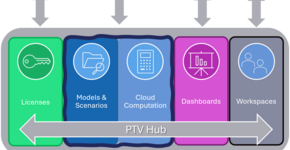Wat mobiliteitstrends betekenen voor betaalwijzen
Tijdens het verzamelen van deskundige inzichten voor ons komende rapport over mobiliteitstrends, werden een aantal gemeenschappelijke thema's duidelijk. Het is waarschijnlijk dat deze thema's bekend zijn bij u, net zoals ze bekend zijn bij de betalingsspecialisten in de mobiliteitssector bij CCV...
By Simon Wood, Senior International Partner Manager at CCV
In the course of collecting expert insights for our upcoming report on mobility trends, a number of common themes became clear.
Firstly, we are seeing a massive shift from traditional vehicles to electric vehicles. As more affordable models enter the market and battery power increases, the popularity of EVs is growing yet further. When combined with improved (and more widespread) charging infrastructure, it’s clear that electric will continue to snatch its share of the market over the coming years.
The eBus and eTrucks market is following close behind. With businesses and governments keen to cut carbon emissions and make their fleets more efficient, electric vehicles are getting bigger.
Secondly, automation is on everybody’s minds. While timelines are debated, the consensus is that autonomous vehicles and unmanned delivery services will enter the mainstream over the next decade. ‘
Thirdly, the aforementioned trends relate to one single pattern: the interconnectedness of travel. We are moving towards Mobility-as-a-Service (MaaS), where technology changes journeys from being a set of separate events to one single voyage. Travellers will experience everything combined: route planning,car pooling, road tolls, train station parking, train tickets, and last mile travel – as well as the return trips.
What These Mobility Trends Mean For Payments
First and foremost, the key to supporting MaaS-style transportation is the ability to track secure identity across different transport services that are owned and managed by a variety of providers. These systems need to allow forward reservations and same-day payments, which is certainly a complex undertaking.
There is an increasing need for payment card tokenisation – enabling operators to use contactless bank cards as identification as they move from one service to the next. Even the beloved Dutch OV-chipkaart is on the way out, and will be replaced by EMV payments across public transport in the Netherlands.
Many regions around the world are looking to switch from closed-loop to open-loop payment systems on their public transport networks. In addition, we are seeing mobility payment methods shift from “card-present” (requiring terminal hardware) to app-based and eCommerce payments.
Furthermore, as we shift to a more integrated and interconnected mobility world, parking still has a huge part to play. While innovation has been relatively slow when compared to other sectors of mobility, major parking operators are enhancing their value proposition with new services and extra convenience.
For example, parking operators are already integrating smart reservation systems and EV charging facilities into their service – but it’s only a matter of time before vehicle rental, insurance (by the km), taxes and tolls, refuelling, and in-vehicle entertainment subscriptions are part of the package. Naturally, this presents its own challenges and opportunities for payment stakeholders.
My expertise is in parking and public transportation, but I know that the EV charging team at CCV has been busy creating industry-leading payment solutions to open up the EV networks – such as QR code systems, for example.
As the EV market matures, we will continue to see this kind of innovation occur to make the payment process as frictionless and convenient as possible for consumers.
For more information about unattended payment solutions for the mobility market, go to CCV.eu/self-service – or contact the CCV team directly.

Dit artikel verscheen eerder in het Intertraffic-Magazine. Lees het hele magazine hier.













